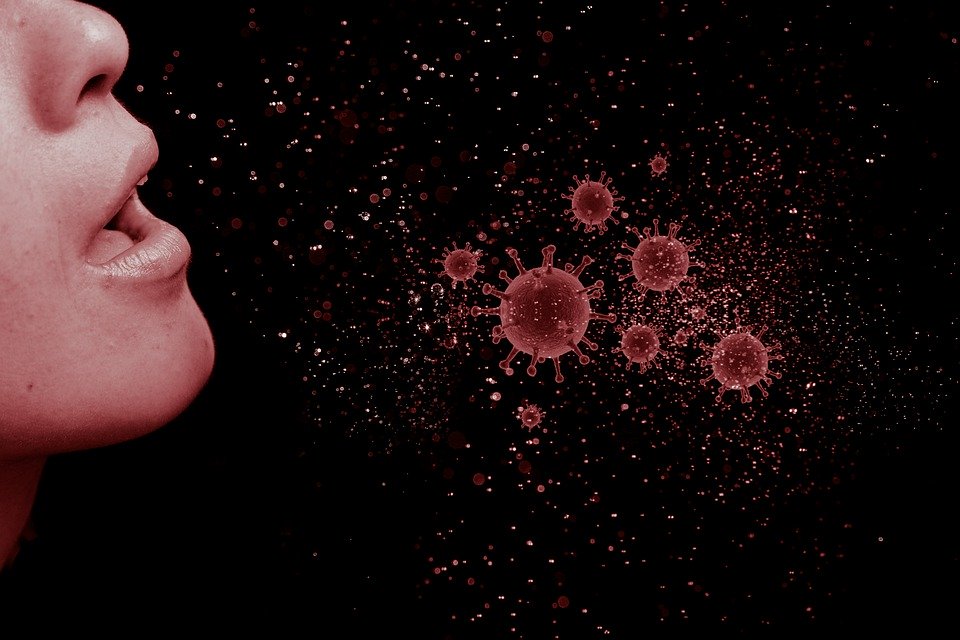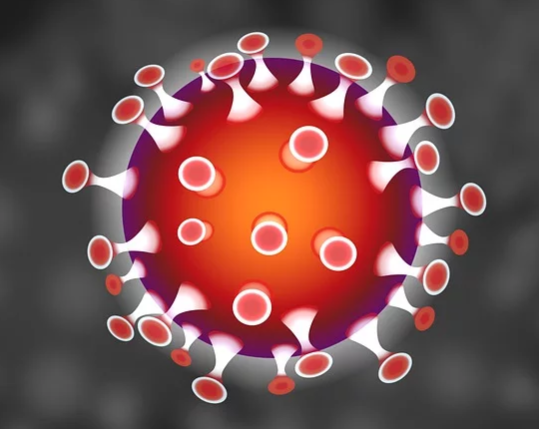COVID 19 An Overview (2020)
This resource guide was created as part of a learning package on Pandemics. For other related resource guides, please head to this directory of Learning Packages.
Note: This learning package was created in 2020 and the information was up-to-date at the point of publication. Please check gov.sg for any latest updates on the COVID-19 situation in Singapore.
COVID-19 : An Overview

Photo credit: Retrieved from pixabay.com/illustrations/coronavirus-virus-spread-flu-4952102/
COVID-19 is a respiratory illness caused by a new type of coronavirus (SARS-CoV-2) whose origins have yet to be determined. In December 2019, the first human cases were identified in Wuhan, China.1 Within the first quarter of 2020, as of 30 March 2020, there have been more than 780,000 confirmed cases in over 170 countries and territories, according to the Johns Hopkins University Tracker. More than 37,000 fatalities have also been reported.2
Current studies suggest that the virus spreads when an individual is exposed to infective respiratory droplets, or by touching contaminated surfaces or objects. The virus then enters the body via the mouth, nose and eyes. It can cause mild flu-like symptoms or develop into severe symptoms such as pneumonia. Older adults and people with serious underlying medical conditions such as diabetes, pulmonary disease or other chronic conditions may be at higher risk for developing serious complications arising from COVID-19.3
While there is currently no vaccine or antiviral medicine to prevent or treat COVID-19, a number of vaccines and drug treatments are being investigated. Fortunately, most patients recover through supportive care. In addition to advocating good personal hygiene and self-isolation if unwell, many governments also encourage social distancing to flatten the curve in the steep spike of cases, to avoid overwhelming healthcare systems.
To find out more about COVID-19 and its widespread impact across the world, check out the resources below.
Videos and Podcasts
1. The science behind the coronavirus, the complete series
Source: The science behind the coronavirus, the complete series. (2020, March 19). Los Angeles Times. Retrieved 2020, March 27.
2. Coronapod: “Test, test, test!”
Coronapod: “Test, test, test!” (2020, March 20). Nature. Retrieved 2020, March 27.
3. Just for kids: A comic exploring the new Coronavirus
COVID-19 web comic created by NPR based on interviews conducted with several experts. (2020, February 28). NPR. Retrieved 2020, March 30.
4. How we must respond to the COVID-19 pandemic: Bill Gates
Source: How we must respond to the COVID-19 pandemic: Bill Gates. (2020, March 26). TED. Retrieved 2020, March 27.
Websites
1. Coronavirus COVID-19 global cases by the Center for Systems Science and Engineering (CSSE) at Johns Hopkins University
Coronavirus COVID-19 global cases by the Center for Systems Science and Engineering (CSSE) at Johns Hopkins University. (2020, March 27). John Hopkins University and Medicine. Retrieved 2020, March 30.
2. Coronavirus: A visual guide to the pandemic
The Visual and Data Journalism Team. (2020, March 30). Coronavirus: A visual guide to the pandemic. BBC News. Retrieved March 30, 2020.
3. Is loss of smell and taste a symptom of COVID-19? Doctors want to find out
Kwong, E., Aubrey, A. & Godoy, M. (2020, March 26). Is loss of smell and taste a symptom of COVID-19? Doctors want to find out. NPR. Retrieved March 30, 2020.
4. Coronavirus disease (COVID-19) pandemic
Coronavirus disease (COVID-19) pandemic. (2020). World Health Organization. Retrieved March 25, 2020.
5. Coronavirus FAQs: Can people without symptoms spread COVID-19? How long does it live on surfaces? What cleaning products kill the virus?
Janes, C. (2020, March 29). Coronavirus FAQs: Can people without symptoms spread COVID-19? How long does it live on surfaces? What cleaning products kill the virus? The Conversation. Retrieved March 30, 2020.
6. COVID-19: Tackling the novel coronavirus
London School of Hygiene & Tropical Medicine. (2020). COVID-19: Tackling the novel coronavirus. FutureLearn. Retrieved 2020, August 14.

Photo credit: Retrieved from pixabay.com/illustrations/corona-coronavirus-virus-pandemic-4899173/
If you are interested to read more about COVID-19, check out the following journal articles:
Journal Articles
1. How COVID-19 is spread
Offord, C. (2020, February 21). How COVID-19 is spread. The Scientist. Retrieved March 25, 2020.
2. Flattening the COVID-19 peak: Containment and mitigation policies
Flattening the COVID-19 peak: Containment and mitigation policies. (2020, March 24). Organisation for Economic Co-operation and Development. Retrieved March 31, 2020.
3. COVID-19 Resource Centre
COVID-19 Resource Centre. (2020). The Lancet. Retrieved March 31, 2020.
4. COVID-19 Resource Centre
Considerations relating to social distancing measures in response to COVID-19 – second update. (2020, March 23). European Centre for Disease Prevention and Control. Retrieved March 28, 2020.
5. COVID-19 Resource Centre
Craven, M., et. al. (2020, March). COVID-19: Implications for business. McKinsey & Company. Retrieved March 28, 2020.
6. LitCovid
LitCOVID Literature Hub is a curated source of up-to-date scientific information about the novel 2019 Coronavirus (COVID-19). (2020, March). National Library of Medicine. Retrieved March 30, 2020.
Disclaimer/ Rights statement
The information in this resource guide is valid as of March 2020 and correct as far as we are able to ascertain from our sources. It is not intended to be an exhaustive or complete history on the subject. Please contact the Library for further reading materials on the topic.
All Rights Reserved. National Library Board Singapore 2020.
References
-
Novel Coronavirus (2019-nCoV) situation report - 1. (2020, January 21). World Health Organisation. ↩
-
Coronavirus COVID-19 Global cases by the Center for Systems Science and Engineering (CSSE) at Johns Hopkins University. (2020, March 27). John Hopkins University and Medicine. ↩
-
Q&A on coronaviruses (COVID-19). (2020, March 9). World Health Organisation. ↩

